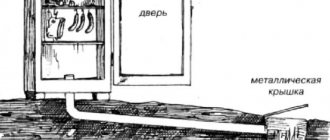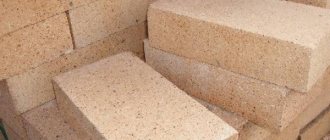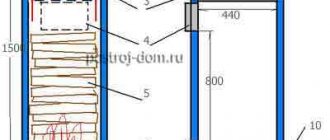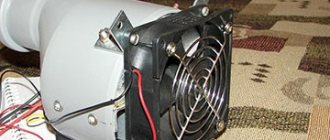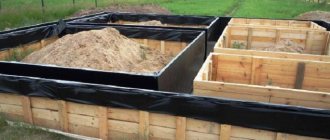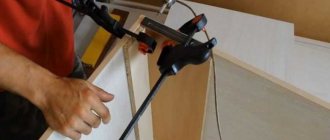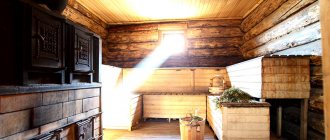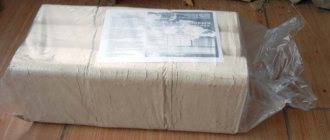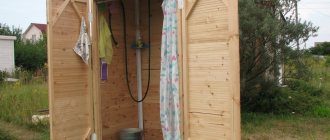Sawdust, agricultural waste, leaves and other plant debris are all excellent fuels.
But for an ordinary boiler it becomes “digestible” only in the form of pressed briquettes - without processing it will have to be added every 5 minutes, and most of it will spill through the grate.
Powerful presses for working with such raw materials are produced in abundance today, but due to the high cost, it is profitable to buy such a unit only for the purpose of organizing constant production.
The average person has to make a press for making fuel briquettes with his own hands.
Production technology of a homemade sawdust press
The source material, most of which is usually sawdust and wood trimmings coming from wood processing enterprises, is crushed and thoroughly dried.
Ultimately, the moisture content of the raw materials is brought to 8% - 10%.
In addition to components of plant origin - wood waste and husks of various agricultural crops - coal dust can be used to make briquettes.
The next stage is the actual production of briquettes from the prepared mass.
To do this, use one of two methods:
- Pressing: raw materials are poured into round or rectangular shapes (this element is called a matrix), where it is compressed using a powerful hydraulic press. The part that directly impacts the raw material is called a punch. The machine develops a pressure of 300 - 600 atm.
- Extrusion: An extruder is very similar to a screw grinder. The screw forces the raw material through a gradually narrowing molding channel and the resulting pressure reaches 1000 atm.
Strong compression leads to the following phenomena:
- The temperature of the mass increases greatly.
- Particles of raw materials begin to release a sticky substance - lignin. Under heating conditions, it reliably binds the crumbly mass, turning it into a solid solid briquette.
- The density of the material increases to 900 - 1100 kg/cubic. m. For comparison: the density of wood is only 500 - 550 kg/cubic. m. Along with the density, the energy value of the fuel per unit volume also increases: now its reserve for the winter will take up half as much space. And pressed logs will burn longer than regular logs.
Next, the briquettes are heat treated (after the extruder they are pre-cut into logs of equal length) and shipped to the warehouse.
Production of fuel briquettes
At home, the production of briquettes from sawdust is carried out using the same technologies as in the conditions of a production enterprise, therefore, before starting to create home-made equipment to solve this problem, it is necessary to delve into all the technological nuances of the production of this fuel.
Technological scheme for the production of fuel briquettes in industrial conditions
The process of producing briquettes for heating begins with grinding the feedstock, which, as mentioned above, can be sawdust, shavings, as well as agricultural waste: husks of wheat, buckwheat, rice and sunflower husks. After grinding, the raw materials for fuel briquettes are thoroughly dried to a moisture level of about 10%.
The formation of a dense briquette from the initial raw material can be carried out according to one of two technological schemes. To implement each of them, appropriate equipment is required, namely:
Hydraulic press for the production of fuel briquettes without the use of binders
The technology for making briquettes for heating, both in the first and second cases, involves exerting significant pressure on the raw material, as a result of which lignin, a natural component that acts as a binder, begins to be released from the wood. Thus, for the production of briquettes there is no need to use additional adhesives, which allows you to maintain the environmental purity of the fuel.
To produce Euro firewood according to the first technological scheme, a mechanical or hydraulic briquette press is used, capable of generating a force of up to 500 Bar. As a result of such force action, spontaneous heating of the raw materials used occurs and the formation of a dense rectangular bar from it.
The extrusion scheme for the production of fuel briquettes involves the use of a screw press, which is capable of exerting pressure on the raw materials used, the value of which reaches 800–1000 Bar.
Diagram of the extruder press operation
When implementing this technology for the production of Euro-firewood, the raw materials are loaded into a receiving hopper, which is equipped with a screw briquetting machine. Next, the raw material captured by the screw is pushed into the narrowed channel of the press, where the material is compacted under high pressure. When compressed in the narrowed part of the working chamber of a sawdust screw press, spontaneous heating of the raw material occurs, as a result of which the finished briquette is formed under simultaneous exposure to high pressure and significant temperature. The finished briquette, when pressed on auger equipment, has the form of a hexagonal block, cut into pieces of the required length.
This is how briquettes are squeezed out by an auger
Press for making fuel briquettes with your own hands
The purchase of ready-made equipment for the production of briquettes, depending on its capacity, will cost from 300 thousand to 1 million rubles.
Of course, for a private owner who wants to start producing this fuel purely for his own needs, such costs are impractical, since they will not pay off soon. It would be more correct to make a press from scrap materials, especially since there is nothing complicated in its design.
You can build the necessary equipment from scratch or use ready-made mechanisms.
Homemade machine
Making an installation from scratch
You can create the significant force required to compress raw materials using:
- lever (you can act on it with your own weight);
- screw mechanism.
A lever press can even be made from wood; for a screw press, you will definitely need steel blanks and a lathe.
A screw extruder (press for sawdust) can theoretically also be made with your own hands, and some craftsmen have even succeeded, but such an undertaking is very expensive due to the complex processing of parts and the need to use special high-quality steel.
Heating with pellets is not only economical, but also environmentally friendly, because recycled materials are used as fuel. You can make a pellet boiler with your own hands or convert a solid fuel stove to use pellets.
You will find detailed instructions for making a solid fuel boiler with your own hands here.
Are you unsure about choosing a pellet boiler? Follow this link: you will find reviews from real users about these boilers. Read and draw conclusions.
Manufacturing a press based on a ready-made mechanism
To make briquettes, you can use some device that is more accessible than a real machine - a jack or a small hydraulic press. All that remains is to equip it with a punch and a matrix.
It should be understood that any homemade press, even one made on the basis of a hydraulic jack, will not be able to develop the forces that ensure the release of lignin. Therefore, instead of it, third-party binders have to be added to the raw material.
In this capacity they use:
- Cheap glue, for example, wallpaper.
- Clay (add 1 part to 10 parts sawdust).
- Soaked paper, including corrugated cardboard - the lignin contained in it, when in contact with moisture, exhibits its adhesive properties (this property of paper is used when spraying a heat insulator like "Ecowool").
Another difference from industrial technology is that the source material is not dried, but rather soaked in water - then the particles stick together better. Then the finished briquette is dried in the open air.
How to grind raw materials
In the hassle of making a homemade press, we must not forget about such an important stage in the production of briquettes as grinding the raw materials. It is very difficult to cut it by hand; mechanization is also necessary. Some people make shredders themselves from an old activator washing machine - they install knives instead of the activator.
Another option is to purchase a rotary machine. The purpose of this device is precisely to chop vegetation - summer residents use it to make fertilizers from leaves and grass.
Useful tips
Fuel briquettes are superior to firewood in terms of calorific value, but heating with them will not always be more economical. The method of such a firebox is justified only in two cases: in the presence of free sawdust in large quantities and in a system for automatically feeding briquettes into the desired device. In other cases, there are no special advantages over the firewood familiar to many. In fact, sawdust will cost more. The difference in price will be more significant than the difference in heat transfer ability.
If you plan to produce briquettes for sale, then you need to find free raw materials and special equipment. A license is not required to produce this type of fuel, but a sanitary and epidemiological certificate is required. After preparing the fuel, you must immediately protect it with plastic wrap from moisture. Store in a special room.
Pressed sawdust is a good alternative to coal and firewood. But with a complete transition to them, you still need to weigh the pros and cons, calculate whether such fuel will really be more profitable than firewood.
Scheme
Homemade lever and screw presses do not require the use of purchased products, but they cannot boast of significant compression force. It is proposed to assemble a press based on a hydraulic jack or the same press.
It can be equipped with an electric motor or a manual drive:
- We will attach the punch to the hydraulic installation. Its dimensions must correspond to the dimensions of the matrix in which the raw materials will be compressed into a briquette.
- We will make the matrix itself from a thick-walled pipe - this is the simplest option. Holes will be made in its walls to allow air and moisture to escape.
- We will equip the matrix with a removable bottom. Having removed it, the finished briquette can be pushed out with a punch into the receiving tray.
Drawing diagram for the production of briquettes from soaked paper pulp
The working mechanism is placed in a housing equipped with two handles for easy transportation.
Sawdust briquettes: how to make “Euro firewood” for fuel units with your own hands
Firewood that would burn for a long time, provide a lot of heat and little ash, and would not emit sparks or soot—the dream of the owner of a country house with stove heating or a fireplace. These are the properties that sawdust briquettes have, which you can not only purchase, but also make with your own hands. It is worth familiarizing yourself with the process of their manufacture. It is so?
We will tell you how to make fuel briquettes for use in heating a country house or cottage. The article we have proposed describes in detail the technology for producing logs from pressed sawdust. Do-it-yourselfers will find brief instructions on how to assemble a pressing machine.
Necessary materials
In addition to the hydraulic installation, you will need some types of rolled steel:
- Channel.
- Equal angle corner 100x100 mm.
- Sheet thickness 3 – 6 mm. A punch will be cut from it. The thickness of the workpiece depends on the diameter of the matrix: the larger it is, the thicker the punch should be.
From the same sheet we will cut out a removable bottom for the matrix.
- A pipe with a diameter of 25 - 30 mm - the punch rod will be made from it.
- A thick-walled pipe is a blank for the matrix. The diameter depends on what size briquettes the user wants to receive. The thinner they are, the higher their density, but the productivity of the machine will decrease.
- A large diameter pipe is a blank for the mixer body. If there is no suitable pipe, the drum can be made from a sheet of tin.
- Galvanized steel for the manufacture of trays.
In total, you will need two trays - for loading the prepared material into the matrix and for receiving the finished briquettes.
Manufacturing and assembly instructions
The order of operations in the manufacture of the press looks like this:
- It is necessary to weld the base of the device from the channels.
- From the corner we make 4 racks 1.5 meters long. They are welded vertically and with the same pitch.
- Next, you need to make a drum from a pipe or sheet of tin in which the raw materials will be mixed. If you have a broken washing machine, the drum, as well as the bearings, can be removed from it.
- The drum must be attached to the stands. If possible, it should be equipped with an electric motor. If the motor is too high-speed and it is not possible to reduce the rotation speed of the drum to an acceptable value due to the difference in pulley diameters alone, a gearbox should be used.
- It is necessary to attach a tray under the drum through which the prepared material will be fed into the matrix.
- In the walls of the pipe used as a blank for the matrix, it is necessary to make several holes with a diameter of 3 - 5 mm. They must be distributed evenly so that air and water are squeezed out throughout the entire volume of the briquette.
- A flange must be welded to the bottom of the matrix, to which the removable bottom will be screwed. This bottom is cut from a steel sheet in the form of a disk with eyes.
- The matrix is welded or screwed to the base under the loading tray.
- We cut out a round punch from a steel sheet. This is simply a disk whose diameter allows it to freely enter the matrix.
The rod is made of a pipe: a diameter of 30 mm is sufficient. One side of it is welded to the punch, and the other is attached to the hydraulic unit.
Next, the entire assembly should be attached to the racks exactly above the matrix.
We fix the receiving tray under the matrix. It is important to install it in such a position that it does not interfere with removing and installing the removable bottom of the matrix.
To reduce the time spent on removing the finished briquette from the matrix, and thereby make the machine more productive, a spring with a disk of the same diameter as the punch can be welded to the bottom of the matrix. After turning off the hydraulic unit and removing the punch, the product will be pushed out automatically by the spring.
Pros and cons of homemade briquettes
Advantages of homemade sawdust fuel briquettes:
- much less carbon dioxide is released than when burning wood or coal;
- compact product requiring little storage space;
- the material does not rot due to its high density;
- burns smoothly and beautifully;
- there will be no garbage and dust in the house;
- cost savings, subject to the availability of raw materials and equipment for manufacturing;
- briquettes burn for a long time - up to four hours;
- little smoke is produced;
- No harmful substances are released into the air;
- chimney cleaning can be done three times less often;
- environmentally friendly and safe;
- boiler power increases by 50%;
- burning coal gives an ash content of 20%, and briquettes 1-1.5%;
- A cubic meter of sawdust briquettes in terms of heat transfer is equal to 4-6 cubic meters of firewood.
Sawdust briquettes burn for a long time and emit little smoke
Disadvantages of homemade sawdust briquettes:
- if the press force is insufficient, the briquettes may crumble;
- At home, ready-made briquettes are difficult to dry well. In the summer, they can be dried in the sun, and at other times of the year - only indoors, which does not significantly reduce humidity. Accordingly, they will burn worse.
- making and drying briquettes requires a lot of space;
- The manufacturing process is extremely labor-intensive and requires great physical effort.
Briquettes must be stored in a dry place. The shelf life of sawdust briquettes made at home does not exceed a year. The ash obtained from the combustion of the product is an excellent fertilizer.
Homemade sawdust briquettes are a cheap and safe fuel. If you have the opportunity to make them yourself, then briquettes will make the process of heating your home profitable and environmentally friendly.
Today's market is literally replete with various industrial installations for small and large businesses. Among this diversity, even experienced specialists sometimes literally run wild. In this article we will look at equipment for the production of sawdust and its derivatives (pellets, granules).
After all, getting raw materials for this business in our country is not a problem; you can negotiate with any forestry department about the collection and removal of dead wood and dead wood. This way you will clear the forest and earn money from it.
